Featured Photo Above:
Addie Joos Benefit Game, July 24, 1911
(Color Restoration by Chris Whitehouse of They Played in Color website)
Baseball History Comes Alive Now Ranked As a Top Five Website by Feedspot Among All Baseball History Websites and Blogs!
(Check out Feedspot's list of the Top 35 Baseball History websites and blogs)

Guest Submissions from Our Readers Always Welcome! Click for details
Subscribe to Baseball History Comes Alive! for automatic updates (sign-up block found in right side-bar)
As a Free Bonus for subscribing, you’ll get instant access to my two Special Reports: Memorable World Series Moments and Gary’s Handy Dandy World Series Reference Guide!
“Warren Spahn and Scenes from the Boston Braves” Photo Gallery
Click on any image below to see photos in full size and to start Photo Gallery:
FROM THE LIGHTER SIDE!
Opening Day, 1946:
The Boston Braves Give New Meaning to “The Wearin’ o’ the Green!”
…And it wasn’t even St. Pat’s Day!
You’d think an Opening Day win for the 1946 Boston Braves would be a cause for celebration and renewed optimism. Even though a blustery early-April day held the attendance down to 19,482, their bright young star, Johnny Sain, had out-lasted Hal Gregg and Leo Durocher’s Dodgers and won by the score of 5-3.
But an unfortunate happening in the stands that day largely overshadowed the play on the field and left a bad taste in everyone’s mouth. Many of the fans—including those who weren’t Irish!—went home “a wearin’ o’ the green!”
FIRST A LITTLE BACKGROUND:
As Opening Day approached, things were looking up for the Braves. They were coming off a dismal 67-85 sixth-place finish in 1945 that saw only 374,178 enter through the turnstiles at Braves Field. But now the team’s “higher-ups,” led by owner Lou Perini, had finally decided the time had come to cast off the Braves’ image as a perennial second-division team.
The Brass were true to their words and went to work during the off-season. After all, their cross-town rivals, the Red Sox, led by manager Joe Cronin and superstar Ted Williams, were stacked and appeared ready to make a run for the 1946 pennant, something that had eluded the Carmines since 1918. And so the Braves’ higher-ups were feeling pressure to act and indicated they were willing to spend whatever it took.
THE BRAVES “GET BUSY” IN THE OFF-SEASON
Their first big move was raiding the Cardinals’ roster and picking up three-time 20-game winner Mort Cooper for a token player and $60,000. Teaming up with Sain and another promising young rookie named Warren Spahn (pictured above), they had the making of a formidable rotation. After landing Cooper, they also made strong bids for Cardinals’ Marty Marion, Whitey Kurowski, and Stan Musial. Unsuccessful in these efforts, they ultimately settled for lesser Cardinal players, including Johnny Hopp and Ray Sanders.
Next, they needed to find a “name” manager; and so they opened up the checkbook and once again turned to the Cardinals. They hoped to lure former Brave Billy Southworth out from under the nose of Cardinal owner Sam Breadon. “Billy the Kid” was the hottest manager in the game, having recently won three successive pennants (1942, ’43, and ’44), including World Series titles in ‘42 and ‘44. A couple years later Southworth would add a fourth pennant and rode this post-season success into the Hall of Fame.
Bob Brady, President of the Boston Braves Historical Association, described the move:
“It took a then unheard of multiyear contract offer to induce the former (1921-23) Braves outfielder back to Boston. St. Louis owner Sam Breadon was unable to match the Braves’ overture to his manager and reluctantly admitted, ‘I can’t stand in his way and I can’t afford to give him that type of contract.’ What Breadon was referring to was a reported base salary of $35,000 a season with incentive bonuses for placing fourth ($5,000), third ($10,000), second ($15,000) and first ($20,000).”
“THE WIGWAM” NEEDED AND UPGRADE TOO!
In addition to the roster enhancements, management now turned its attention to Braves Field. It was definitely in need of a facelift. They allotted $500,000 for renovations: Light towers were installed, as the team prepared to inaugurate night baseball. The outfield fence was upgraded, and shrubbery was planted in the right-field pavilion. The Braves’ uniforms also received an upgrade, as a reflective, satin night-game uni was introduced. They added the now-classic tomahawk insignia to both the day and nighttime uniforms.
HERE COMES THE PAINT!
The annual Braves-Red Sox pre-season City-Series was held on April 12-14 at Fenway Park. It ended with the Red Sox taking two-out-of-three and drubbing the Braves in the final game 19-5 before 33,279 fans, the largest crowd in the history of the event. The Braves home opener was now just two days away. To get the park ready, the Braves decided the reserved grandstand seats needed a fresh coat of emerald green paint. Time was of the essence if it was to be completed for the Opener…
CAN YOU SEE WHERE THIS IS GOING??
Yes…the geniuses in charge of getting Braves Field ready for Opening Day didn’t allow sufficient time for the emerald green paint to completely dry! The frosty, early-spring weather in Boston didn’t help. And just to make things worse— although it’s hard for us to imagine—back in the Forties, the usual attire for men at ball games was business suits and ties; while women usually came adorned in dresses. With the day’s chilly weather, plenty of the die-hard fans were clad in topcoats and furs.
Wet paint plus suit, ties, and dresses leads to…what? A disaster, that’s what! And so, shortly after settling into their seats to partake of the Opening Day festivities, many fans discovered to their dismay funny “green streaks” running down the backside of their clothes!
Irate Braves fans immediately flooded the team’s administration office located at the park’s main entrance. The overwhelmed staff, completely unprepared for such a calamity, could only offer simple cleaning fluid as a solution, but they soon ran out. Scores of unhappy fans left the ballpark with an unwanted emerald green paint “souvenir.”
Bob Brady describes what happened next:
“The Braves front office reacted quickly to the first-game fiasco. An advertisement was placed in local newspapers [see below] the next day with the heading, “An Apology to Braves Fans.” In print, the club promised full reimbursement of cleaning costs to all of those in attendance suffering from stained clothing. Fans were reassured that those sections of the grandstand with undried paint would be closed off for the season’s second game.”
Management opened up a “paint account” to reimburse fans with damaged clothing. Two attorneys were retained to review the claims. All told about 13,000 requests were received, including some dubious ones from such faraway places as Florida and California. The Braves ended up forking out about $6,000 to settle the claims, ranging from a low of $1.50 to a high of $50.
All’s Forgiven!
Despite the rather inauspicious start to the 1946 season, all was eventually forgiven as attendance increased to a club-record 969,673. They even improved in the standings, up to fourth place, going 81-72, 15 1/2 games behind the pennant-winning Cardinals. The Redbirds then beat the Braves’ cross-town rivals, the Red Sox, in the exciting 1946 World Series. Just two years later, 1948, the Tribe, behind “Spahn and Sain and pray for rain,” were in the World Series themselves, their first appearance in the Fall Classic since 1914.
Shop MLB.com. The Official Online Shop of Major League Baseball.
Gary Livacari
Photo Credits: All from Google search
Information: Excerpts edited from article by Bob Brady on the Braves 1946 Home Opener
Check out my latest book, recently nominated for the SABR 1919 Lawrence Ritter award: Reflections On the 1919 Black Sox: Time to Take Another Look now available on Amazon in e-book and paperback. All profits go to the Illinois Veterans Foundation
Add your name to the petition to help get Gil Hodges elected to the Hall of Fame
Vote In Our New Poll: Baseball and the Coronavirus – What Constitutes a Legitimate Season?
We are a participant in the Amazon Services LLC Associates Program, an affiliate advertising program designed to provide a means for us to earn fees by linking to Amazon.com and affiliated sites. Click here to view Amazon’s privacy policy
[contact-form][contact-field label=”Name” type=”name” required=”true” /][contact-field label=”Email” type=”email” required=”true” /][contact-field label=”Website” type=”url” /][contact-field label=”Message” type=”textarea” /][/contact-form] [contact-form][contact-field label=”Name” type=”name” required=”true” /][contact-field label=”Email” type=”email” required=”true” /][contact-field label=”Website” type=”url” /][contact-field label=”Message” type=”textarea” /][/contact-form]
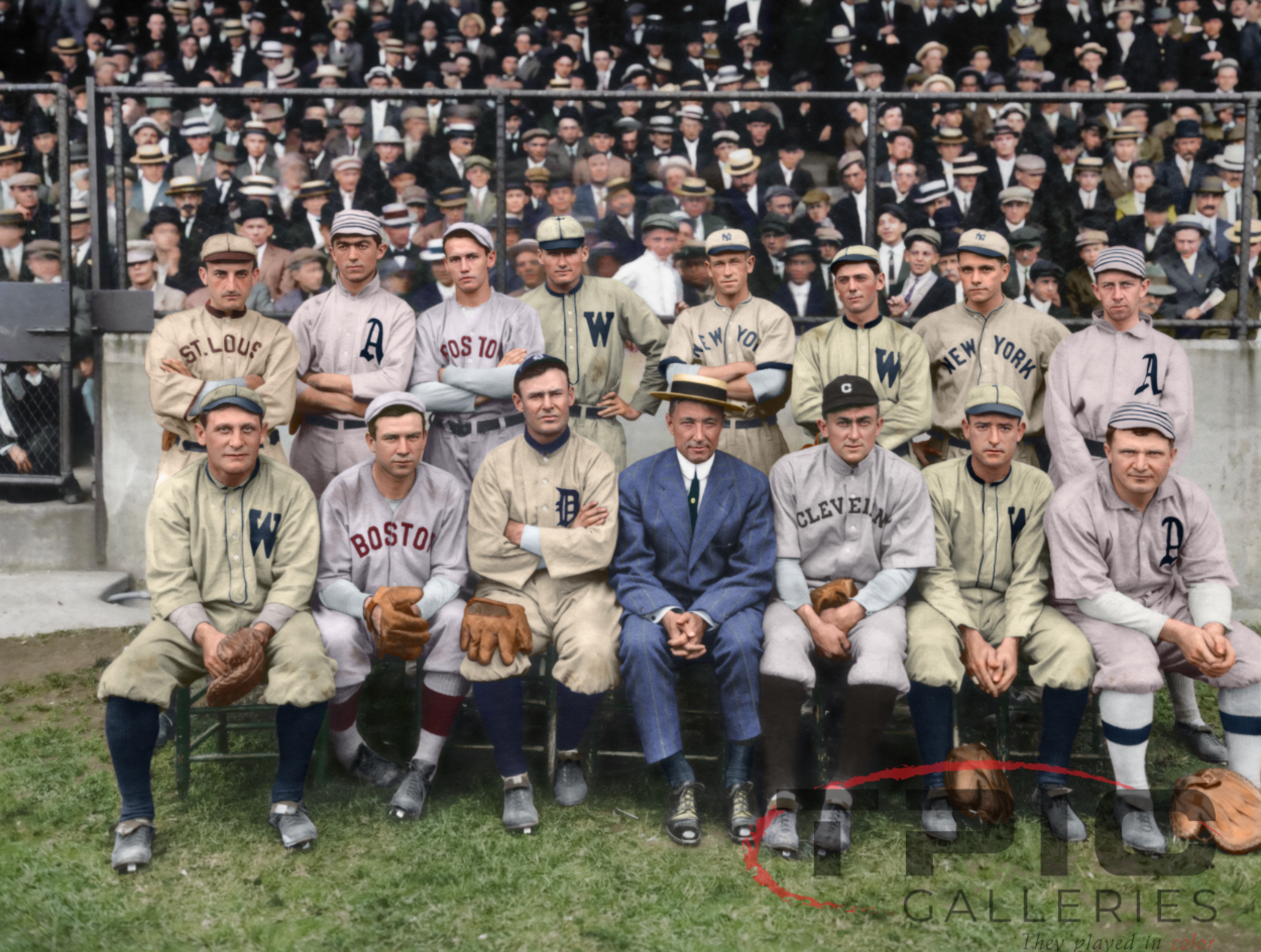
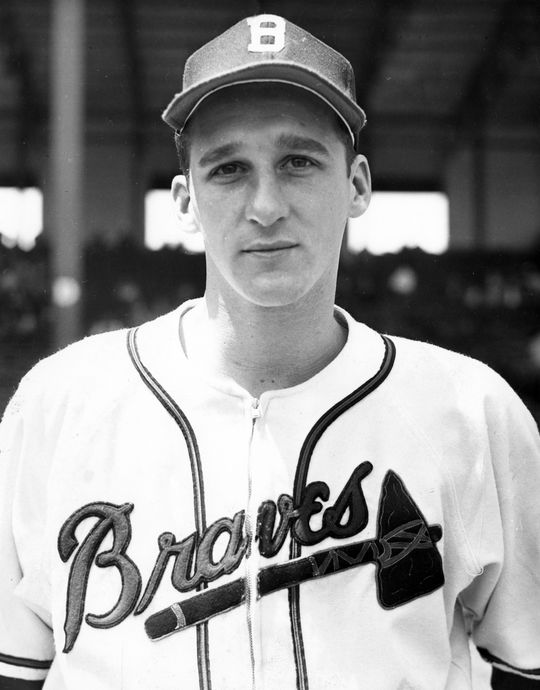
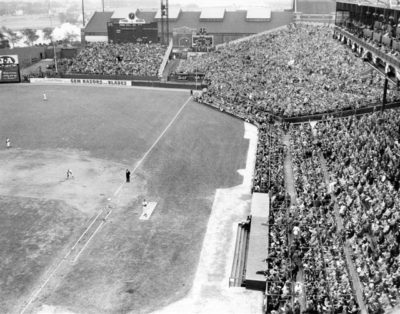
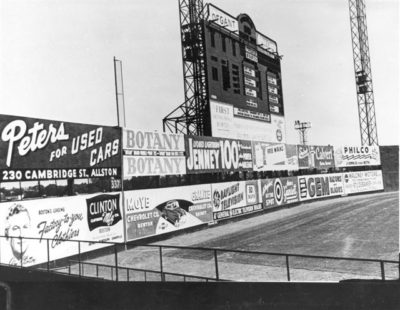
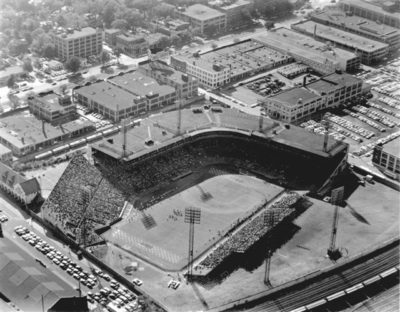
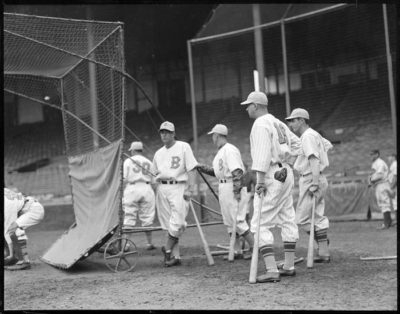
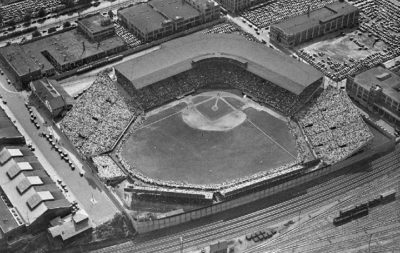
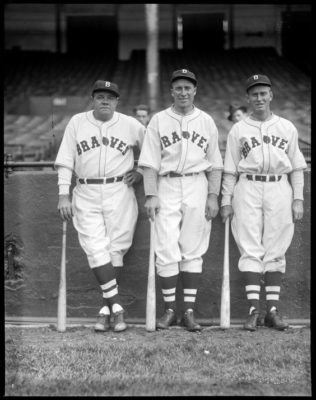
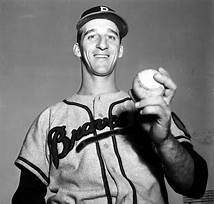
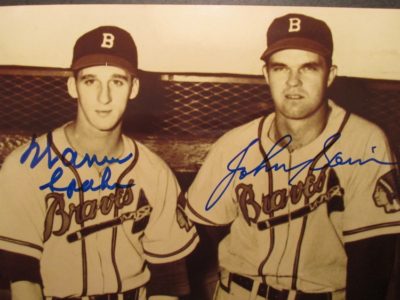
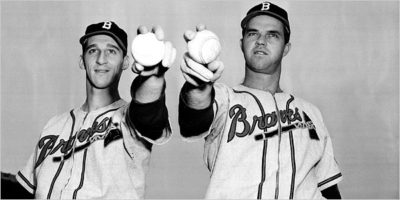
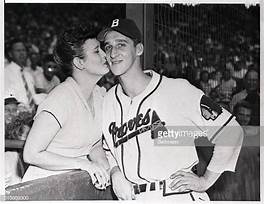
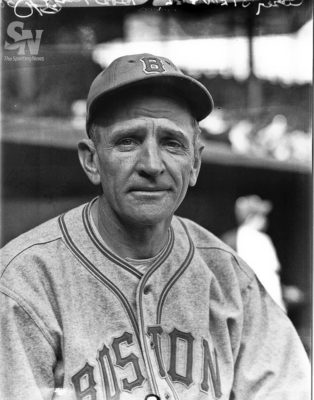
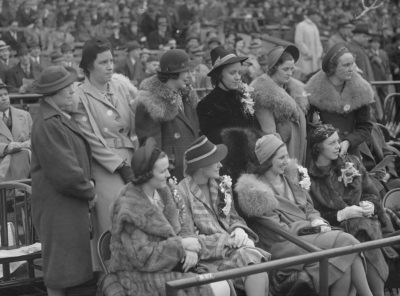
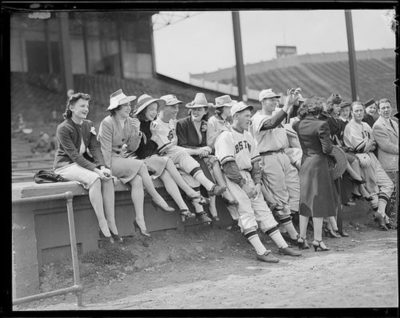
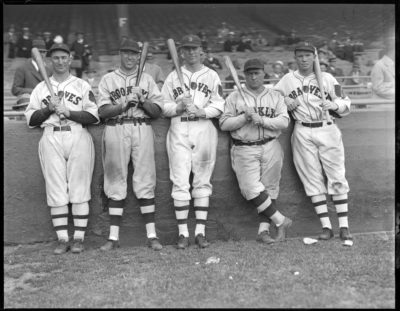
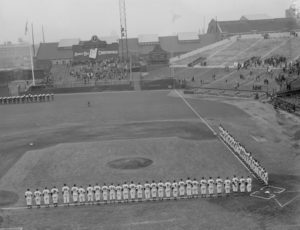
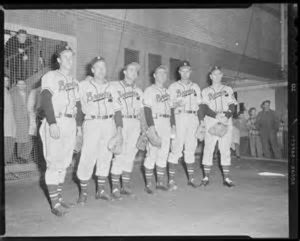
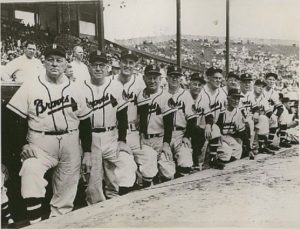
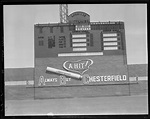
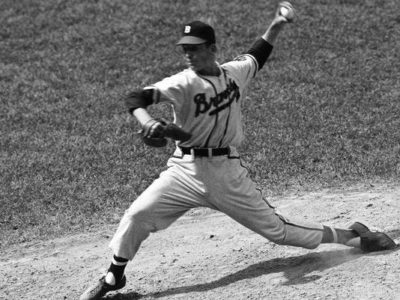
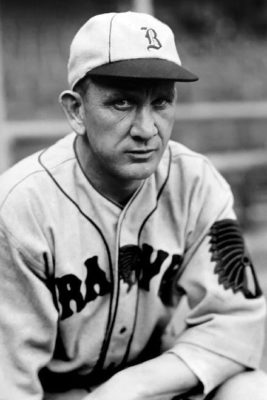
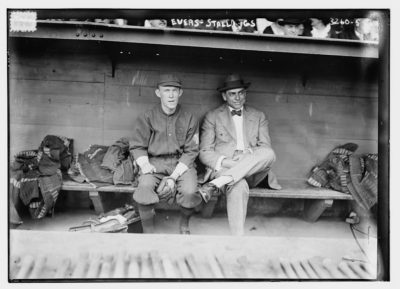
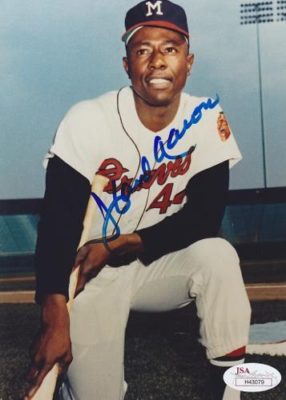
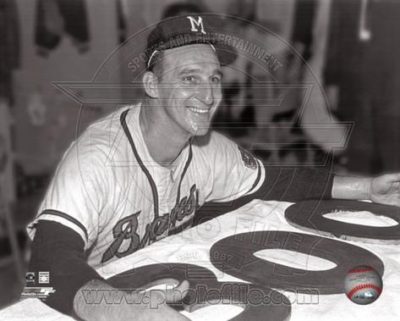
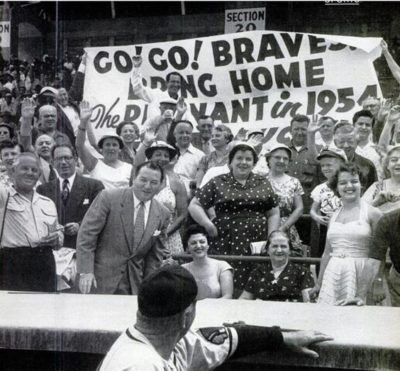
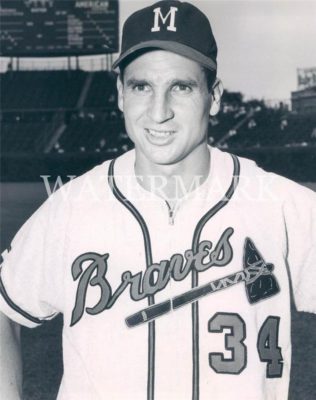
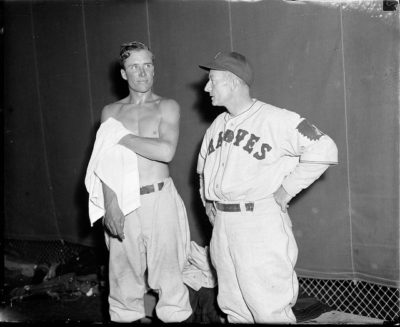
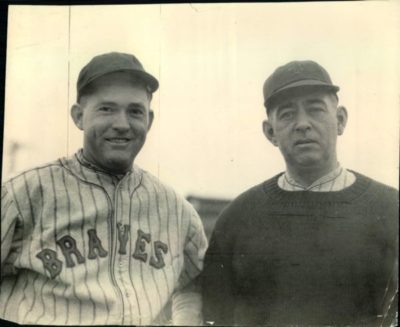
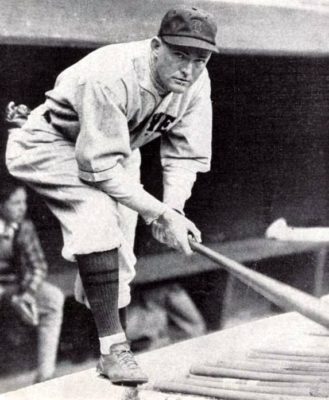
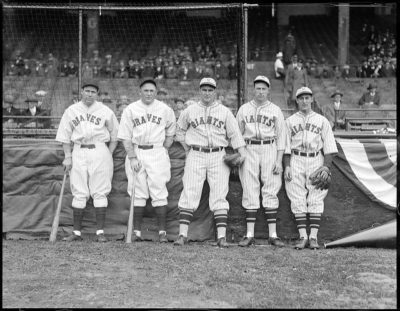
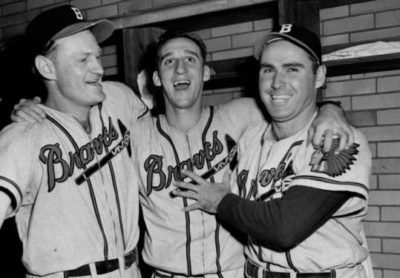

A little known fact is that the Braves Public Relations Director in those days was Billy Sullivan.
Sullivan and his family were subsequently investors in the origins of the old American Football League and owners of the Boston Patriots franchise from the league’s inception in 1959 until the early 1990’s.
Sullivan’s pecuniary efforts with the product on the field and the spartan facilities that the team played was often accused of taking fans “to the cleaners”.
But on Opening Day 1946, it was the opposite, where fans literally took the team “to the cleaners.”